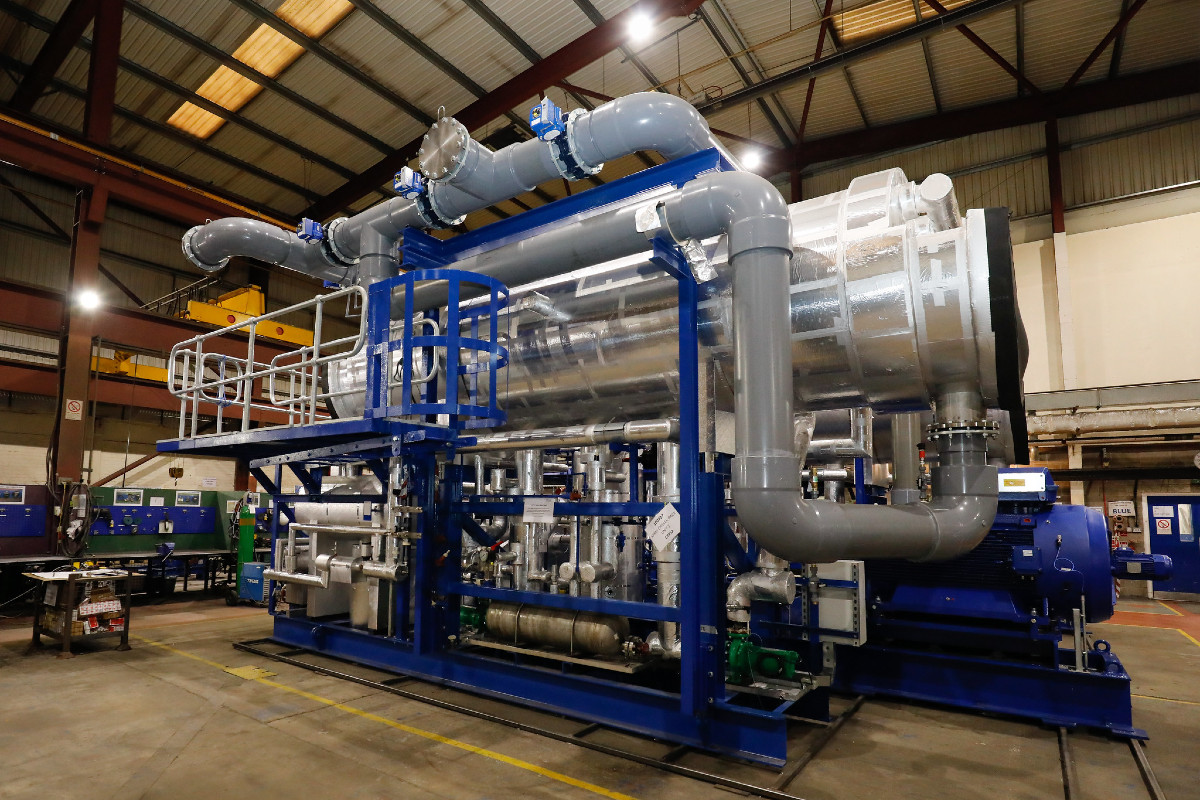Gauthier Bechet, Manager of Strategy & Implementation at ENGIE Impact, sets out why high-efficiency industrial heat pumps – fired by renewable electricity – could redefine factory heat and carbon costs, if companies can move past the myths
The industrial sector faces a critical and urgent challenge: reducing its reliance on fossil-fuel generated heat. Nearly three-quarters of the energy used in industry is to generate heat, and 90% of it is still derived from fossil fuels. However, finding low-carbon solutions has proven difficult.
That said, there is a possible solution: heat pumps. When powered by renewable electricity, heat pumps offer a highly efficient, low-carbon solution to a wide range of thermal demands. In short, heat pumps can potentially transform industrial heating and cooling as next-generation technologies advance. Despite this, knowledge gaps persist in industrial settings, with many stakeholders doubting the reliability and operational complexity of heat pumps.
Let’s explore some of the misconceptions around heat pumps, and how companies can fold this technology into their wider decarbonisation programmes.
The versatility of heat pumps
Heat pumps’ key advantage lies in their remarkable efficiency and the ability to leverage waste heat from factory processes as well as the ground, air, and/or water. By converting low-temperature heat into higher-temperature heat, rather than generating heat from fuel combustion, they achieve 3-5 times the efficiency of traditional gas boilers, delivering significantly more heat per unit of input energy without the associated carbon emissions.
In addition to this, heat pumps are versatile and adaptable across a wide range of processes, making them a key technology for achieving Net Zero ambitions when integrated into a comprehensive decarbonisation strategy. To give an example of their versatility, heat pumps can be used in several low-temperature applications, such as pasteurisation, drying, and cleaning in the food and beverage sector or bleaching, de-inking, and initial drying phases in the pulp and paper industry. When powered by green electricity, they offer a direct pathway to decarbonised heat.
Coupling heat pumps with renewable energy sources, such as onsite solar generation, enhances their sustainability and cost-effectiveness. Onsite renewable electricity not only reduces operational carbon footprints but also mitigates risks associated with fluctuating energy costs and grid constraints. These factors make the combination of heat pumps and onsite renewables an excellent choice for companies aiming to achieve net zero goals.
Unifying heat pumps with electrification
One of the most important considerations when integrating heat pumps into industrial operations is recognising that they are not a one-size-fits-all solution. Their effectiveness depends on careful design and planning, including waste heat recovery and system optimisation.
In short, heat pumps are most effective when considered as part of a holistic decarbonisation strategy, extending beyond equipment replacement to encompass broader system integration, energy efficiency improvements, and the use of renewable energy sources.
Successfully integrating heat pumps into industrial operations requires more than just replacing traditional fossil-fuel-driven equipment; it demands a comprehensive approach that includes analysing actual heat demands, ensuring grid capacity is sufficient, and exploring how renewables can support operations. For instance, installing onsite renewable energy sources, such as solar PV, can insulate operations from volatile electricity prices. By generating clean electricity onsite, companies enhance the sustainability of their heat pump systems while ensuring long-term cost stability. Only by taking these steps will heat pumps fully deliver on their promise as a no-regrets lever for industrial decarbonisation.
Cost misconceptions around heat pumps
Heat pump systems are often perceived as expensive due to their higher upfront costs compared to fossil-fuel alternatives. Around two-thirds of the expense around heat pumps goes into design, installation, and integration within the existing site infrastructure. The heat pump unit itself accounts for only about one-third of the total cost.
In addition to this, heat pumps offer significant savings over their lifecycle due to their high efficiency and lower operating costs, particularly when paired with renewable energy. However, their cost-effectiveness does depend heavily on several geopolitical factors.
Geopolitical factors at play
The economic viability of heat pumps varies significantly by region due a concept called the ‘Spark Ratio’, or ‘Spark Gap’. This refers to the price difference between electricity and natural gas. A narrow Spark Gap can unlock the potential of heat pumps as a decarbonisation solution, but in regions where conditions are unfavourable, even the most efficient systems may struggle to gain traction.
Another factor that can influence cost effectiveness is regulatory environments across different regions. Countries with strong renewable energy incentives and carbon pricing mechanisms enhance the business case for heat pump adoption. Conversely, in regions with limited support for electrification, transitioning to heat pumps may be financially challenging without broader reforms.
Understanding the economic viability of heat pumps requires a holistic view of market dynamics as well as policy frameworks. For instance, in the EU, policies such as the REACH and F-Gas regulations have limited and/or banned the use of certain refrigerants in heat pumps. Heat pump developers and industries must navigate these regulatory and environmental shifts carefully, ensuring compliance while adopting refrigerants that balance performance, safety, and sustainability.
Additionally, companies with multiple sites in different countries need to be aware of these parameters, as well as the potential for onsite solar energy production when considering portfolio-wide implementation of electric heating solutions.
Heat pumps’ role in a sustainable future
Heat pumps represent a transformative decarbonisation opportunity for industries whose processes require low-temperature heat, and increasingly the lower end of medium-temperature heat. When paired with renewable electricity and implemented as part of a comprehensive strategy, heat pumps deliver not only significant carbon reductions but also long-term cost savings and operational resilience.
Successful adoption requires a forward-looking approach. Addressing site inefficiencies and investing in onsite renewable energy are key preparatory steps. Businesses must also navigate regional variations in energy costs and regulations. By proactively managing these challenges, companies can position themselves as leaders in sustainable innovation, unlocking the full potential of heat pumps as a solution for decarbonisation.
The future of industrial heating is electric, efficient, and sustainable. Heat pumps offer a pathway to rethinking energy use – driving progress toward a greener, more resilient industrial sector.


